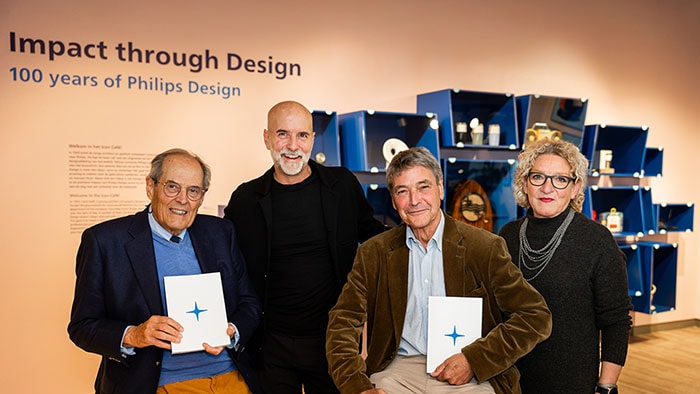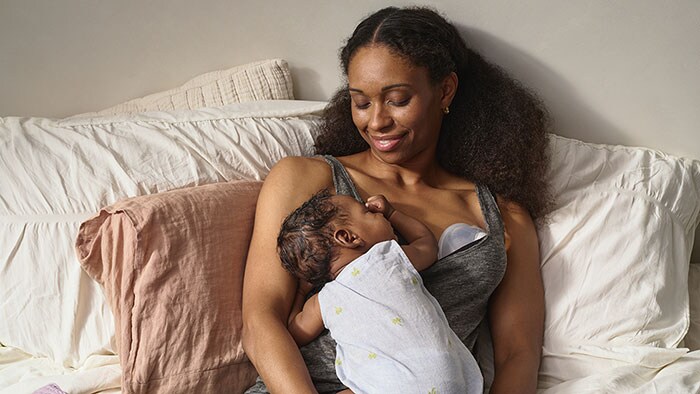Je koopt een product, gebruikt het, en gooit het daarna weg als afval. Eeuwenlang wisten we niet beter. Nu zijn we ons steeds meer bewust van de vervuiling die dit veroorzaakt, zoals de plastic soep in de oceanen. Daarom heeft Philips in zijn duurzaamheidsdoelstellingen opgenomen dat 90 procent van het bedrijfsafval wordt gerecycled en niks meer naar stortplaatsen wordt gebracht. Van alle verkopen bestaat op dit moment 70 procent uit groene producten en diensten, 15 procent uit circulaire inkomsten. Want zelfs grote medische apparatuur hoeft niet afgeschreven te worden na gebruik. Teddy Heerbaart is iemand die er binnen Philips Circular Equipment alles aan probeert te doen om nog goede onderdelen, van bijvoorbeeld een MRI-scanner, niet verloren te laten gaan maar juist in te zetten voor de toekomst. “Bij ons krijgt medische apparatuur een tweede, en soms zelfs een derde leven.”
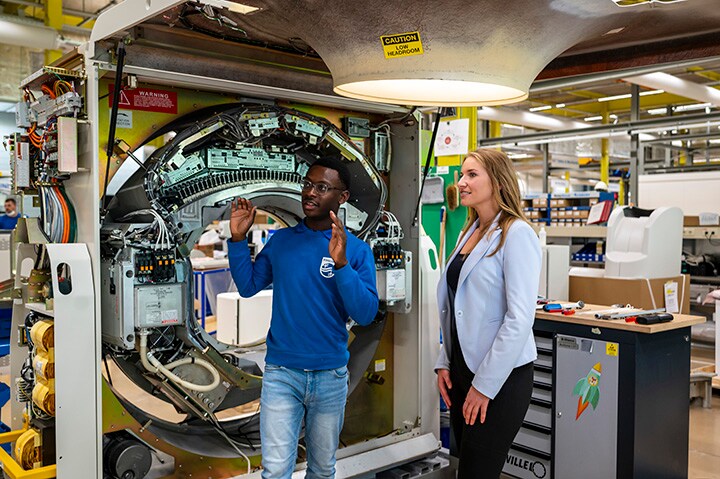
Teddy begon haar carrière bij Philips als Management Trainee, waarin ze in een periode van drie jaar verschillende onderdelen van het bedrijf zag. “Mijn eerste rol was bij Refurbished Systems in Best, waar apparatuur wordt klaar gemaakt voor een tweede leven. Toen ik net binnen was en een rondleiding kreeg, was ik daar zo van onder de indruk; die CT- en MRI-systemen die volledig uit elkaar worden gehaald en opgeknapt, zodat ze van binnen en van buiten weer zo goed als nieuw zijn.” Nadat ze binnen haar traineeship projecten afrondde in andere bedrijfsonderdelen, lonkte de duurzaamheidskant van Philips weer. “Ik ben toen aan de slag gegaan bij Circular Equipment; wij zoeken continu naar mogelijkheden om de circulariteit van systemen te vergroten. Dat kan op verschillende manieren. Refurbishen is er daar één van; zoals je ook vaak ziet bij computers en telefoons, kun je ook MRI- en CT-systemen een tweede leven geven. En als ze na dat tweede leven opnieuw worden ingeruild, dan kun je onderdelen hergebruiken en geef je ze dus eigenlijk een derde leven.”
Economische voordelen
Voor het ziekenhuis kleven daar ook economische voordelen aan. “Deze constructie zorgt voor een goede inruilwaarde bij het aanschaffen van bijvoorbeeld een nieuwe MRI-scanner. Nu komt het nog wel eens voor dat ziekenhuizen een apparaat dat aan het eind van zijn levenscyclus is aan een opkoper verkopen. Wij proberen ze over te halen tot een trade-in, zodat we zeker weten dat er zo duurzaam mogelijk wordt omgegaan met het systeem of de onderdelen.” Teddy helpt collega’s van over de hele wereld om hier programma’s voor op te zetten. “De wet- en regelgeving kan sterk verschillen tussen landen. Dat geldt ook voor het belang dat ziekenhuizen hechten aan duurzaamheid. Daarom is de aanpak in geen land hetzelfde, maar we willen overal een steeds groter deel van onze business circulair maken.”
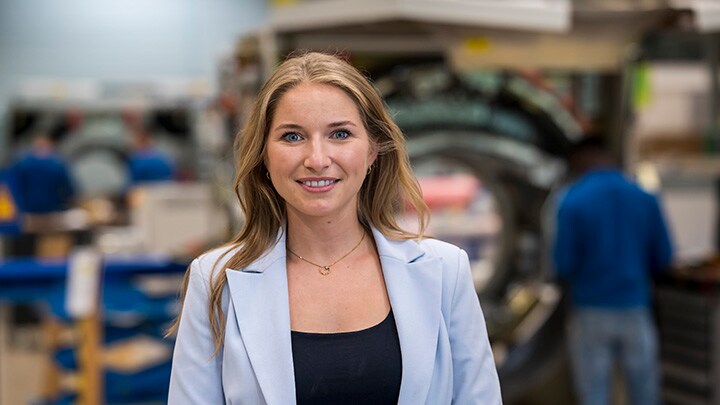
Ze ziet wel dat er een groeiende trend is dat duurzaamheid steeds hoger op de agenda’s staat van zorginstellingen: “In het laatste Future Health Index-rapport zag je dat de bereidheid van zorgverleners om te verduurzamen wereldwijd toeneemt. Het is mooi om te zien dat onze klanten hier meer en meer het belang van inzien, dat helpt ons ook om het elk jaar weer een stukje beter te doen.” In haar werk ziet ze ook dat er niet alleen idealistische motieven zijn om circulair te werken, maar ook economische: “We werken aan een loyaliteitsprogramma om te stimuleren dat onderdelen en apparatuur verantwoord worden ingeruild. Zo kunnen ziekenhuizen korting krijgen op nieuwe apparatuur of softwareapplicaties na inlevering van een systeem. Op die manier maken we binnen Philips van duurzaamheid geen vrijblijvende randvoorwaarde, maar een economisch rationeel model. Circulair is nu gewoon hoe we het doen, het is een heel logisch onderdeel van onze propositie waar we volledig op inzetten.”
Circulair is nu gewoon hoe we het doen, het is een heel logisch onderdeel van onze propositie waar we volledig op inzetten.
Teddy Heerbaart
Business Development Manager Circular Equipment
Of ze nog kansen ziet om een nog hoger percentage circulaire verkopen te halen in de toekomst? “Onze ‘north star’, het uiteindelijke, ultieme doel, is dat we een centraal platform bieden waar op je systemen kunt blijven upgraden. Dus in plaats van elke keer een nieuw systeem aanschaffen heb je een basissysteem waar je bepaalde onderdelen van kunt vernieuwen, maar de belangrijkste vernieuwingen doorvoert met behulp van software-upgrades. Dat heet ook wel ‘design for circularity’ – circulariteit zit dan als het ware al ingebakken in het ontwerp en de opbouw van een systeem.” In de serie ‘duurzaam doen’ laten we de mensen aan het woord die zich binnen Philips elke dag bezighouden met het realiseren van duurzaamheidsdoelstellingen. Lees ook: Philips wil 2,5 miljard levens verbeteren in 2030; hoe en waarom meten we dat? Robert Metzke, Head of Sustainability, legt uit waarom Philips zichzelf duurzaamheidsdoelstellingen stelt en hoe de resultaten worden gemeten en berekend.
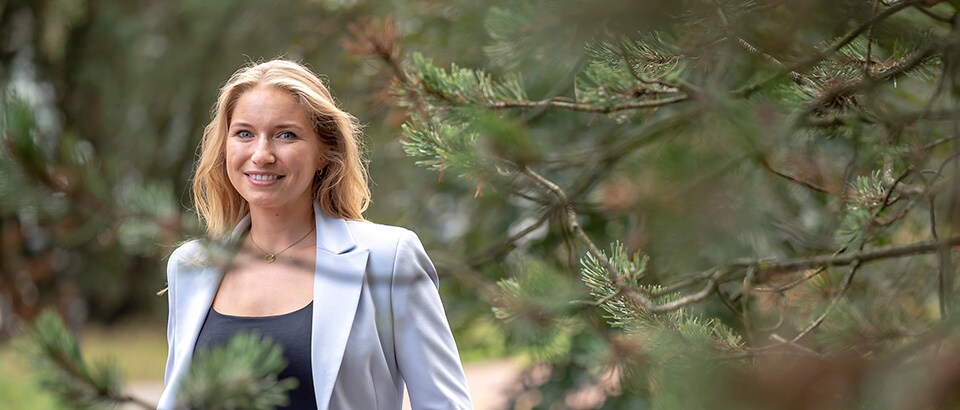
'We give medical equipment a second, and sometimes even a third life'
You buy a product, use it, and then throw it away as waste. For ages, we didn't know any better. Now we are increasingly aware of the environmental damage this causes, such as the plastic soup in the oceans. That's why Philips has included in its sustainability goals that 90 percent of its corporate waste is recycled and nothing is sent to landfills anymore. Of all sales, 70 percent are green products and 15 percent of revenues are circular. Because even large medical equipment doesn't have to be written off after use. Teddy Heerbaart is one of the people in Philips Circular Equipment who work hard every day to stimulate the re-use of parts of medical systems, such as MRI scanners. "With us, medical equipment gets a second, and sometimes even a third life."

Teddy began her career at Philips as a Management Trainee, where she saw different business parts of the company over a three-year period. "My first role was at Refurbished Systems in Best, where equipment is prepared for a second life. When I had just arrived and was given a tour, I was so impressed by that; seeing CT and MRI systems that are completely taken apart and refurbished so that they are as good as new inside and out." After completing projects in other business units within her traineeship, the sustainability side of Philips caught her interest again. "I then started working at Circular Equipment; we are constantly looking for opportunities to increase the circularity of systems. This can be done in various ways. Refurbishing is one of them; as you often see with computers and telephones, you can also give MRI and CT systems a second life. And if they are traded in again after that second life, we can often reuse those parts and actually give them a third life."
Economic benefits
For the hospital, there are also economic benefits. "This circular business model ensures a good trade-in value when purchasing a new MRI scanner, for example. Now hospitals sometimes sell equipment that has reached the end of its life cycle to a buyer. We try to persuade them to make a trade-in, so we can ensure that the system or parts are handled as sustainably as possible." Teddy helps colleagues from around the world set up programs for this. "Laws and regulations can vary greatly between countries. So does the importance that hospitals place on sustainability. Therefore, the approach is not the same in any country, but we want to make an increasing part of our business circular around the globe."

She does see a growing trend for sustainability to be higher and higher on the agendas of healthcare institutions: "In the last Future Health Index report, we saw that the willingness of healthcare providers to become more sustainable is increasing worldwide. It's great to see that the market increasingly recognizes the importance of this, which also helps us to do a little better every year." In her work, she also sees that there are not only idealistic motives for circularity, but also economic ones: "We are working on a loyalty program to encourage the responsible exchange of parts and equipment. For example, hospitals can get a discount on new equipment when trading in their used system with us. In this way, within Philips we are making circularity an economically rational model that makes business sense as well. Circular is now simply how we do it, it is a very logical part of our proposition that we are fully committed to."
Circular is now just how we do it, it's a very logical part of our proposition that we're fully committed to.
Teddy Heerbaart
Business Development Manager Circular Equipment
Which opportunities does she see to achieve an even higher percentage of circular sales in the future? "Our 'north star', our ultimate, goal, is that we provide a central platform on which you can keep upgrading systems. So instead of buying a new system every time, you have a core system on which the most important renewals will occur through software upgrades and parts will only be renewed when necessary. This is also known as 'design for circularity' - circularity is then already ingrained in the design and construction of a system." In the series Sustainability in Action, we explore the stories and people behind Philips' sustainability goals. Who are the people who make sure every day that Philips’ ambitions in the areas of good health & well-being, responsible consumption & production and climate are met? Read also: Philips aims to improve 2.5 billion lives by 2030; how and why do we measure it? Robert Metzke, Head of Sustainability, explains why Philips sets itself sustainability targets and how the results are measured and calculated.



